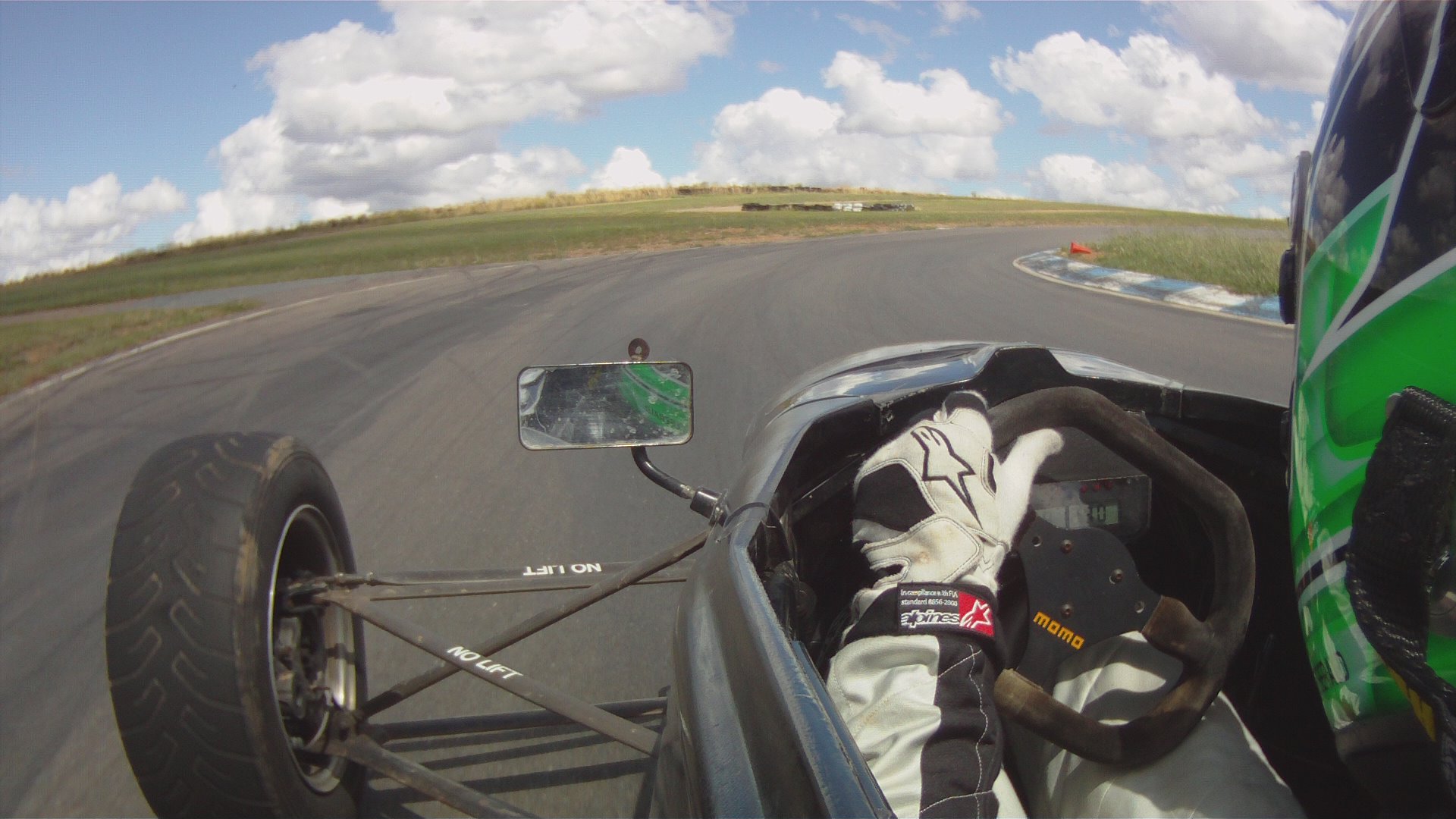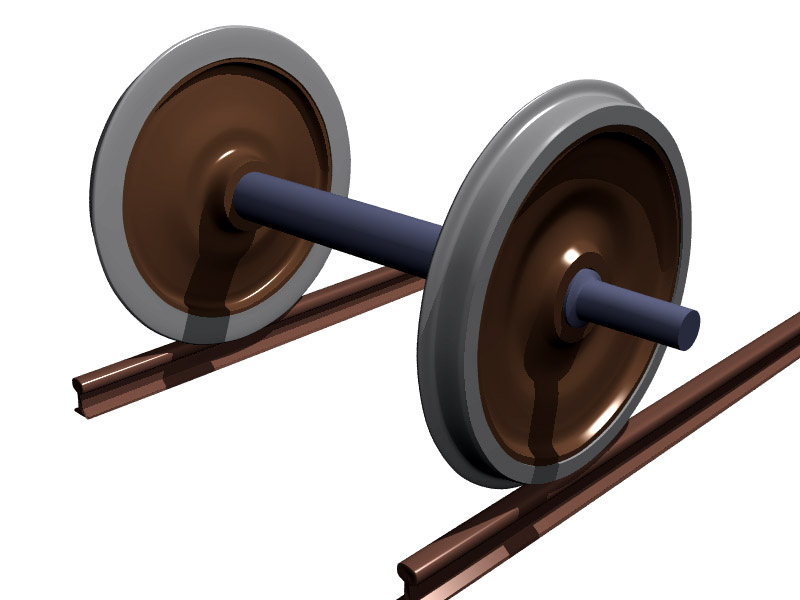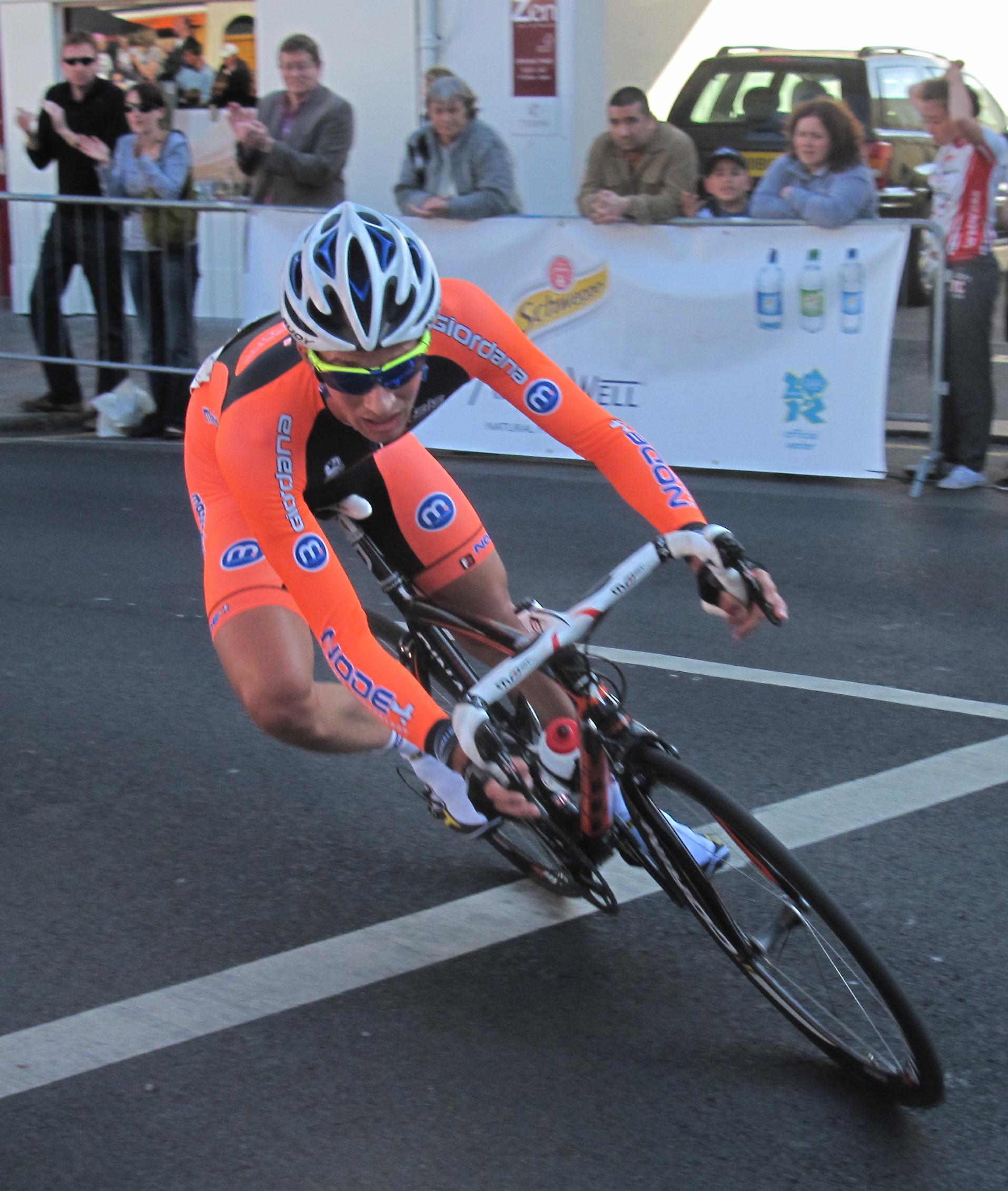|
Steering Knuckle
300px, Double Wishbone Suspension In automotive suspension, a steering knuckle or upright is that part which contains the wheel hub or spindle, and attaches to the suspension and steering components. The terms ''spindle'' and ''hub'' are sometimes used interchangeably with steering knuckle, but refer to different parts. The wheel and tire assembly attach to the hub or spindle of the knuckle where the tire/wheel rotates while being held in a stable plane of motion by the knuckle/suspension assembly. In the attached photograph of a double-wishbone suspension, the knuckle is shown attached to the upper control arm at the top and the lower control arm at the bottom. The wheel assembly is shown attached to the knuckle at its center point. Note the arm of the knuckle that sticks out, to which the steering mechanism attaches to turn the knuckle and wheel assembly. Types Steering knuckles come in all shapes and sizes. Their designs differ to fit all sorts of applications and suspen ... [...More Info...] [...Related Items...] OR: [Wikipedia] [Google] [Baidu] |
Suspension
Suspension or suspended may refer to: Science and engineering * Car suspension * Cell suspension or suspension culture, in biology * Guarded suspension, a software design pattern in concurrent programming suspending a method call and the calling thread until a precondition (guard) is satisfied * Magnetic suspension, a method by which an object is suspended with no support other than magnetic fields * Suspension (topology), in mathematics * Suspension (dynamical systems), in mathematics * Suspension of a ring, in mathematics * Suspension (chemistry), small solid particles suspended in a liquid ** Colloidal suspension * Suspension (mechanics), system allowing a machine to move smoothly with reduced shock * Suspensory behavior, arboreal locomotion of primates * Suspend to disk, also known as hibernation, powering down a computer while retaining its state. * The superstructure of a suspension bridge Temporary revocation of privileges * Suspension (punishment), temporary exclusion a ... [...More Info...] [...Related Items...] OR: [Wikipedia] [Google] [Baidu] |
Suspension (vehicle)
Suspension is the system of tires, tire air, spring (device), springs, shock absorbers and Linkage (mechanical), linkages that connects a vehicle to its wheels and allows relative motion between the two. Suspension systems must support both road holding/Automobile handling, handling and ride quality, which are at odds with each other. The tuning of suspensions involves finding the right compromise. The suspension is crucial for maintaining consistent contact between the road wheel and the road surface, as all forces exerted on the vehicle by the road or ground are transmitted through the tires' contact patches. The suspension also protects the vehicle itself and any cargo or luggage from damage and wear. The design of front and rear suspension of a car may be different. History An early form of suspension on ox-drawn carts had the platform swing on iron chains attached to the wheeled frame of the carriage. This system remained the basis for most suspension systems unti ... [...More Info...] [...Related Items...] OR: [Wikipedia] [Google] [Baidu] |
Wheel Hub Assembly
A wheel hub assembly (WHA), also referred to as hub assembly, wheel hub unit, wheel hub bearing, is an automotive part used in most cars, passenger vehicles, and light and heavy trucks. Operation The hub assembly is located between the brake drums or discs and the drive axle. A wheel is bolted on it. Depending on the construction, the end of the hub comes equipped with the splined teeth. They mate the teeth on the axle shaft. The axle hub spins along with the wheels bolted to it and provide power to the wheels in order to rotate. A roller bearing between the axle hub and axle shaft ensures easy rotation of the non-drive wheels. On the axle side, it is mounted to the holding bracket from the chassis; on the disc side, the wheel is mounted to the bolts of the WHA. When replacing, a wheel hub assembly should be torqued to the vehicle's specifications to prevent failure. [...More Info...] [...Related Items...] OR: [Wikipedia] [Google] [Baidu] |
Spindle (automobile)
In an automobile, the wheel spindle, sometimes called simply the spindle, is the part of the suspension system that carries the hub for the wheel and attaches to the upper and lower control arms. Spindles are carried by steering knuckles or "uprights". Although the terms "steering knuckle" and "upright" are sometimes used interchangeably with "spindle", they all refer to different parts. Design There are several considerations when designing a spindle. Loads and forces need to be considered. Tolerance to vertical and horizontal forces greater than those due to 5 times the acceleration of gravity, approximately 50 meters per second squared, are sometimes considered desirable. Non-driven wheel The main forces on a non-driven wheel are braking and turning forces. Driven wheel The main forces on a driven wheel include forward and reverse propulsion in addition to braking and turning forces. See also * Front axle assembly * List of auto parts This is a list of auto parts, ... [...More Info...] [...Related Items...] OR: [Wikipedia] [Google] [Baidu] |
Wheel Hub Assembly
A wheel hub assembly (WHA), also referred to as hub assembly, wheel hub unit, wheel hub bearing, is an automotive part used in most cars, passenger vehicles, and light and heavy trucks. Operation The hub assembly is located between the brake drums or discs and the drive axle. A wheel is bolted on it. Depending on the construction, the end of the hub comes equipped with the splined teeth. They mate the teeth on the axle shaft. The axle hub spins along with the wheels bolted to it and provide power to the wheels in order to rotate. A roller bearing between the axle hub and axle shaft ensures easy rotation of the non-drive wheels. On the axle side, it is mounted to the holding bracket from the chassis; on the disc side, the wheel is mounted to the bolts of the WHA. When replacing, a wheel hub assembly should be torqued to the vehicle's specifications to prevent failure. [...More Info...] [...Related Items...] OR: [Wikipedia] [Google] [Baidu] |
Half Shaft
An axle or axletree is a central shaft for a rotating wheel or gear. On wheeled vehicles, the axle may be fixed to the wheels, rotating with them, or fixed to the vehicle, with the wheels rotating around the axle. In the former case, bearings or bushings are provided at the mounting points where the axle is supported. In the latter case, a bearing or bushing sits inside a central hole in the wheel to allow the wheel or gear to rotate around the axle. Sometimes, especially on bicycles, the latter type of axle is referred to as a ''spindle''. Terminology On cars and trucks, several senses of the word ''axle'' occur in casual usage, referring to the shaft itself, its housing, or simply any transverse pair of wheels. Strictly speaking, a shaft that rotates with the wheel, being either bolted or splined in fixed relation to it, is called an ''axle'' or ''axle shaft''. However, in looser usage, an entire assembly including the surrounding axle housing (typically a casting) is a ... [...More Info...] [...Related Items...] OR: [Wikipedia] [Google] [Baidu] |
Transaxle
A transaxle is single mechanical device which combines the functions of an automobile's transmission (mechanics), transmission, axle, and differential (mechanics), differential into one integrated assembly. It can be produced in both manual transmission, manual and automatic transmission, automatic versions. Engine and drive at the same end Transaxles are nearly universal in all automobile configurations that have the engine placed at the same end of the car as the driven wheels: the front-engine, front-wheel-drive layout, front-engine/front-wheel-drive; rear-engine, rear-wheel-drive layout, rear-engine/rear-wheel-drive; and rear mid-engine, rear-wheel-drive layout, mid-engine/rear-wheel-drive arrangements. Many mid-engine design, mid- and rear-engine design, rear-engined vehicles use a transverse engine and transaxle, similar to a front-wheel-drive unit. Others use a longitudinal engine and transaxle like Ferrari's 1989 Ferrari Mondial#Mondial t, Mondial t which used a "T" ar ... [...More Info...] [...Related Items...] OR: [Wikipedia] [Google] [Baidu] |
Differential (automotive)
A differential is a gear train with three drive shafts that has the property that the rotational speed of one shaft is the average of the speeds of the others. A common use of differentials is in motor vehicles, to allow the wheels at each end of a drive axle to rotate at different speeds while cornering. Other uses include clocks and analogue computers. Differentials can also provide a gear ratio between the input and output shafts (called the "axle ratio" or "diff ratio"). For example, many differentials in motor vehicles provide a gearing reduction by having fewer teeth on the pinion than the ring gear. History Milestones in the design or use of differentials include: * 100 BCE–70 BCE: The Antikythera mechanism has been dated to this period. It was discovered in 1902 on a shipwreck by sponge divers, and modern research suggests that it used a differential gear to determine the angle between the ecliptic positions of the Sun and Moon, and thus the phase of the Moon. * : ... [...More Info...] [...Related Items...] OR: [Wikipedia] [Google] [Baidu] |
Steering Knuckle Diagram
Steering is the control of the direction of motion or the components that enable its control. Steering is achieved through various arrangements, among them ailerons for airplanes, rudders for boats, cylic tilting of rotors for helicopters, and many more. Aircraft Aircraft flight control systems are normally steered when airborne by the use of ailerons, spoileron, or both to bank the aircraft into a turn; although the rudder can also be used to turn the aircraft, it is usually used to minimize adverse yaw, rather than as a means to directly cause the turn. On the ground, aircraft are generally steered at low speeds by turning the nosewheel or tailwheel (using a tiller or the rudder pedals) or through differential braking, and by the rudder at high speeds. Missiles, airships and large hovercraft are usually steered by a rudder, thrust vectoring, or both. Small sport hovercraft have similar rudders, but steer mostly by the pilot shifting their weight from side to side and unba ... [...More Info...] [...Related Items...] OR: [Wikipedia] [Google] [Baidu] |
Ackermann Steering Geometry
The Ackermann steering geometry (also called Ackermann's steering trapezium) is a geometric arrangement of linkages in the steering of a car or other vehicle A vehicle () is a machine designed for self-propulsion, usually to transport people, cargo, or both. The term "vehicle" typically refers to land vehicles such as human-powered land vehicle, human-powered vehicles (e.g. bicycles, tricycles, velo ... designed to solve the problem of wheels on the inside and outside of a turn needing to trace out circles of different radii. It was invented by the German carriage builder Georg Lankensperger in Munich in 1816, then patented by his agent in England, Rudolph Ackermann (1764–1834) in 1818 for horse-drawn carriages. Erasmus Darwin may have a prior claim as the inventor dating from 1758. He devised his steering system because he was injured when a carriage tipped over. Advantages The intention of Ackermann geometry is to avoid the need for tyres to slip sideways when foll ... [...More Info...] [...Related Items...] OR: [Wikipedia] [Google] [Baidu] |
Sterling Elliott
Sterling Elliott (1852–1922) produced a series of successful inventions in the late 19th and early 20th centuries. He held more than 125 patents, receiving his first at age 22. He was foremost an inventor but also a successful businessman. His tenacity and determination to improve on everyday objects helped enhance the quality of life for established businesses, as well as the average person. His inventive mind and creative genius developed the first Knot Tying machine (No.237,966 ), the low wheeled trotting sulky (No.494,113), the Elliott addressing machine (No.707,961), the pneumatic tire (No.487,874), the ball bearing (No. 483,836) and last but not least the unequal turning of the front wheels or steering knuckle (i.e.- kingpin) that would turn out to be a critical element in the success of the automobile. Early life Sterling Elliott was born in 1852 on a farm in Ortonville, Michigan. At the age of twelve years all of the farm work was turned over to Sterling. At the age o ... [...More Info...] [...Related Items...] OR: [Wikipedia] [Google] [Baidu] |



